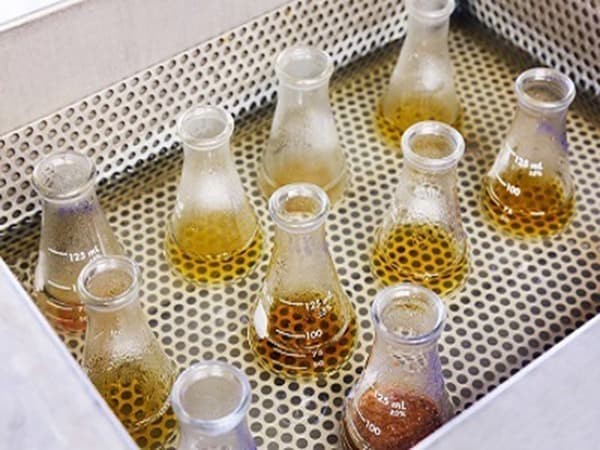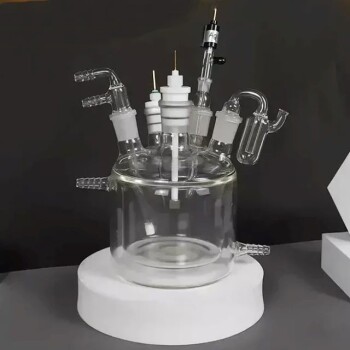Water bath is a common piece of laboratory equipment that is used to heat samples or substances to a specific temperature. Water baths work by immersing the sample or substance in a container of heated water, which allows for precise and consistent temperature control.
Water baths can be used for a variety of applications, including:
- Thawing frozen samples
- Warming reagents or solutions
- Melting solids or substances
- Conducting bacterial assays and tests
- Performing coliform determinations
- Testing the quality of food products
Applications of water bath
Water baths are available in a variety of designs and types to meet the needs of different applications and uses. Here is a brief overview of the four main types of water baths:
- Static baths: These are the most basic type of water bath and are used for simple warming and maintaining a constant temperature. They are typically used for reagent warming or thawing frozen samples.
- Shaking baths: These water baths are equipped with a shaking mechanism, which allows for the sample to be agitated or mixed while being heated. They are often used for cell culture and hybridization applications.
- Stirring baths: These water baths have a stirring mechanism, which allows for the sample to be mixed or stirred while being heated. They are often used for melting solid substances or for conducting enzymatic assays.
- Circulating baths: These water baths have a built-in pump that circulates the heated water around the sample or substance. This helps to ensure even heating and temperature consistency. They are often used for enzymatic assays and other applications where precise temperature control is important.
In addition to these main types of water baths, there are also specialized water baths available for specific applications, such as water baths with built-in refrigeration units for cooling samples, or water baths with built-in circulators for maintaining a constant temperature in a larger volume of water.
Wet Bath Vs Dry Bath
Wet baths, also known as water baths, and dry baths are both types of laboratory equipment used for heating samples or substances to a specific temperature. However, they differ in how they achieve this heating.
Wet baths use a container filled with heated water to transfer heat to the sample or substance. This allows for precise temperature control and a large surface area for heating, which means that samples can be heated quickly. Wet baths are also more efficient at storing heat, which can help to reduce temperature fluctuations. However, wet baths do have the potential for water-borne contamination, so they must be properly disinfected to prevent the growth of bacteria.
Dry baths, on the other hand, use a block heater to transfer heat to the sample or substance. Dry baths typically have a fixed block insert that accommodates a specific size of tube or container. They are more limited in the size and type of samples they can accommodate compared to wet baths. Dry baths are also less efficient at storing heat, which can result in more temperature fluctuations. However, they do not have the potential for water-borne contamination, so they do not require regular disinfection.
In general, wet baths offer more flexibility and efficiency in terms of heating samples, but dry baths may be more convenient and practical in certain situations. The choice between a wet bath and dry bath will depend on the specific needs and requirements of the application.
Advantages
Water baths offer several advantages for heating and maintaining the temperature of samples or substances in a laboratory setting. Some of the main benefits of water baths include:
- Precise temperature control: Water baths allow for precise temperature control, with some models having temperature tolerances as low as 0.2°C. This makes them ideal for applications where precise temperature control is important.
- Consistency: Water baths provide consistent heating of samples or substances, which can be important for ensuring the accuracy and reliability of results.
- Flexibility: Water baths can accommodate a wide range of samples and substances, including tubes, containers, and larger volumes of fluid. This makes them a versatile and flexible tool for many types of laboratory applications.
- Efficiency: Water baths are efficient at storing heat and can heat samples quickly, which can help to reduce the time required for sample processing.
- Safety: Water baths are generally safe to use, as the water serves as a buffer that prevents the sample or substance from overheating. This can help to protect both the sample and the user from the risk of burns or other accidents.
- Versatility: Water baths are suitable for a wide range of applications, including thawing frozen samples, warming reagents or solutions, melting solids or substances, and conducting bacterial assays and tests. This makes them an essential tool for many types of scientific and analytical work.
Maximum Temperature of Water Bath
Water baths are designed to maintain a range of temperatures from just above ambient temperature (typically around 5°C) to a maximum of 100°C. Without additional external heating equipment, water baths are not able to attain temperatures above 100°C.
One of the advantages of water baths is that they provide a high degree of temperature uniformity throughout the basin, with tolerances as low as 0.2°C in some cases. This makes them an excellent choice for applications where precise temperature control is important.
Most water baths also come equipped with digital LED controllers that allow users to set and monitor the temperature of the bath. These controllers often include real-time readouts of bath conditions and can trigger alarms if the temperature exceeds a user-defined set point. This helps to ensure that the bath is operating within the desired temperature range and can alert users if there are any issues or deviations.
Water Bath Tank Capacity
The tank capacity of a water bath refers to the volume of water or thermal beads that can be safely held within the bath's basin. Water baths are available in a range of tank sizes to meet the needs of different applications.
Low-throughput water baths typically have a tank capacity of 2 liters or less, while high-throughput water baths may have a capacity of up to 12 liters or more. The size of the tank will depend on the specific needs and requirements of the application.
Some water baths also come with optional sample racks or tube blocks that can help to maximize the storage capacity of the bath. These accessories can allow users to store and heat multiple samples at the same time, increasing the efficiency and productivity of the bath.
Shaking Speed
Shaking water baths are designed to agitate or mix the contents of the bath by moving the basin in an orbital motion. They are often used for cell culture, hybridization assays, and environmental sample testing, as the shaking motion can help to promote mixing and improve the efficiency of these processes.
Shaking water baths typically have a range of shaking speeds that can be adjusted to meet the needs of different applications. Low-speed shaking baths may maintain speeds of around 200 rpm, which is suitable for samples diluted in pH-neutral buffer or DI water.
High-speed shaking baths, on the other hand, may maintain speeds of up to 500 rpm, which is better suited for viscous reagents or cell growth media.
Specific Features
there are several application-specific features that may be available on water baths to meet the specific needs and requirements of different applications. Here is a brief overview of some of these features:
- Sample racks: Some water baths may come with included or optional sample racks that are designed to hold specific types of tubes or containers, such as 2.0 ml flip-cap tubes, 15 ml centrifuge tubes, or 50 ml culture tubes. These racks can help to maximize the storage capacity of the bath and make it easier to load and unload samples.
- Drain ports: Water baths with drain ports make it easy to clean the basin and refill it with fluid. They can also help to protect the work area from spills and make it easier to dispose of fluids. Some water baths may also have optional tubing that can be connected to the drain port for easy fluid disposal.
- Gable covers: Clear gable covers can help to protect samples from outside contaminants, accommodate glassware and tubes of varying sizes, and prevent condensation build-up. They can also help to retain heat within the bath and make it easier to load and unload samples.
- Self-calibration: Some water baths come with self-calibration features that allow users to define and save temperature calibration programs. This can be helpful for ensuring that the bath is performing according to specification and for making adjustments as needed.
- Digital displays: Digital controllers with LED readouts and audible alarms can help users to monitor and control the temperature of the bath in real-time. Some controllers may also allow users to define and save programs for quick recall.
- Thermal beads: Thermal beads are dry metal beads that can be used in place of water in non-shaking, static wet baths. They are more resistant to bacterial growth than water, but are less effective at achieving temperature uniformity. They may be used in situations where samples are prone to cross-contamination.
How to choose water bath for your lab
When choosing a water bath for your lab, there are several factors to consider to ensure that you select a model that meets your needs and requirements. Here are a few key things to consider:
- Tank capacity: Consider the volume of samples you need to heat and choose a water bath with a tank capacity that can accommodate them. You'll also want to consider whether you need a water bath that can hold multiple samples at once or if a single-sample capacity is sufficient.
- Temperature range: Consider the temperature range you need for your samples and choose a water bath that can reach and maintain those temperatures. Some water baths may have a maximum temperature of 100°C, while others may be able to reach higher temperatures with external heating equipment.
- Type of water bath: There are several types of water baths available, including static baths, shaking baths, stirring baths, and circulating baths. Consider the specific needs and requirements of your application and choose a water bath that is best suited to your needs.
- Sample handling: If you need to load and unload samples frequently, you may want to consider a water bath with features like sample racks or gable covers to make the process easier.
- Precision and accuracy: Consider the level of precision and accuracy you need for your samples and choose a water bath that can meet those requirements. Some water baths may have temperature tolerances as low as 0.2°C, while others may have a wider range of tolerance.
- Price and budget: Finally, consider your budget and choose a water bath that fits within your price range. Keep in mind that more expensive water baths may have more advanced features and better performance, but they may not be necessary for all applications.
Related Products
- Multifunctional Electrolytic Electrochemical Cell Water Bath Single Layer Double Layer
- Optical Water Bath Electrolytic Electrochemical Cell
- 24T 30T 60T Heated Hydraulic Press Machine with Heated Plates for Laboratory Hot Press
- Automatic Heated Hydraulic Press Machine with Heated Plates for Laboratory Hot Press 25T 30T 50T
- Heated Hydraulic Press Machine with Integrated Manual Heated Plates for Lab Use
Related Articles
- Understanding Flat Corrosion Electrolytic Cells: Applications, Mechanisms, and Prevention Techniques
- Understanding Quartz Electrolytic Cells: Applications, Mechanisms, and Advantages
- Advanced Techniques in Coating Evaluation Using Electrolytic Cells
- Understanding Electrodes and Electrochemical Cells
- Electrolytes and Electrochemical Electrodes














